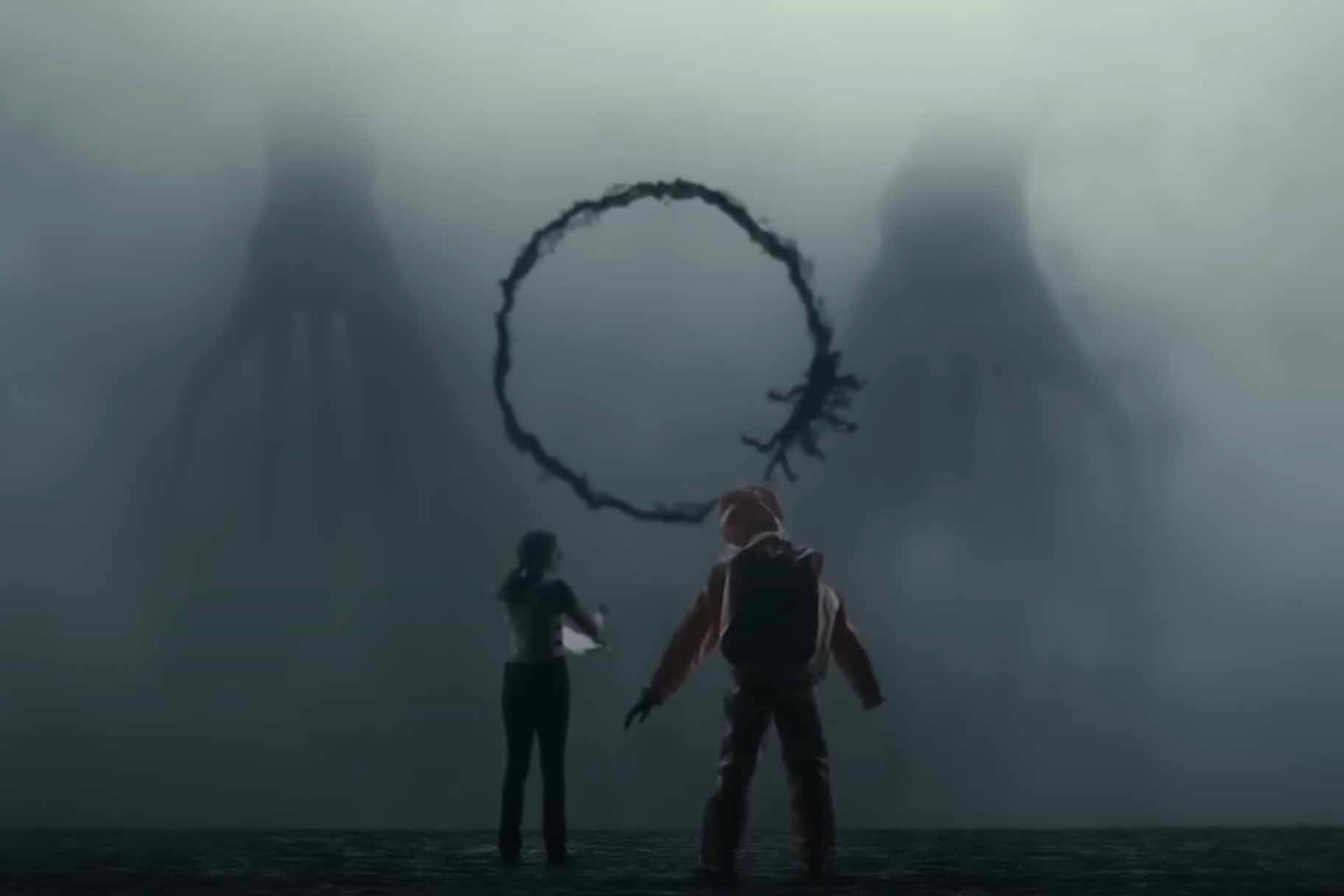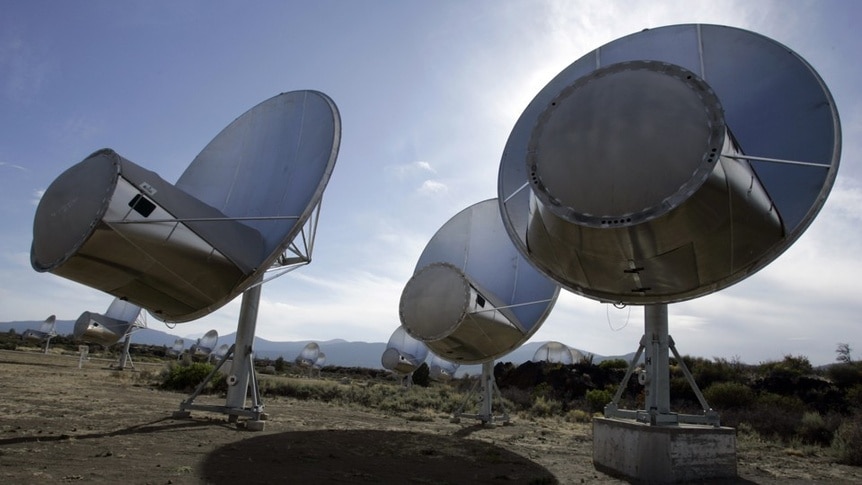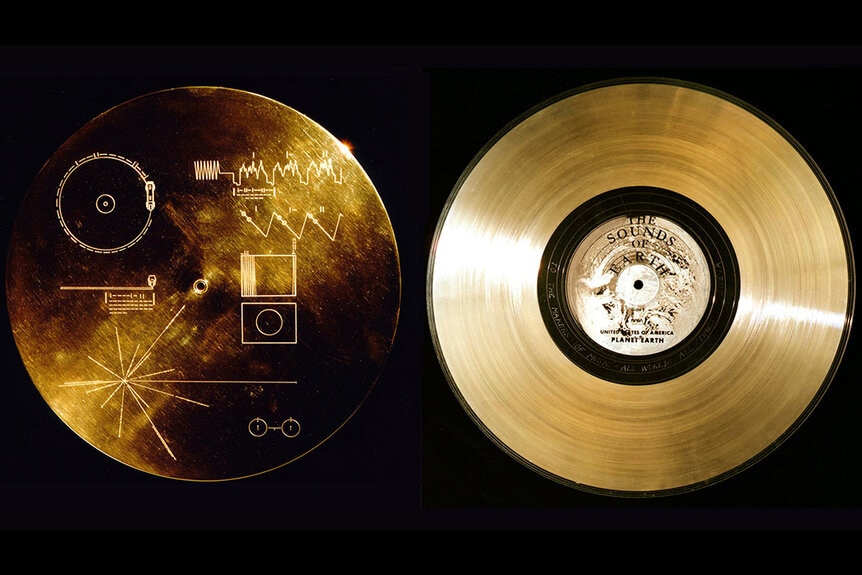Create a free profile to get unlimited access to exclusive videos, sweepstakes, and more!
How Scientists Are Attempting to Communicate with Aliens: The Science Behind Arrival
If we ever got an alien on the phone, what would we say to them?

For decades, storytellers have been imagining what it might be like when humanity first makes contact with an alien intelligence. In 1998, author Ted Chiang delivered the novella “Story of Your Life,” about a linguist who becomes swept up in the attempt to communicate with extraterrestrial visitors. That story was later adapted into the film Arrival, directed by Denis Villeneuve (Dune), and starring Amy Adams as linguist Louise Banks.
When 12 alien spacecraft arrive at points around the globe, a collection of scientists, language experts, and military personnel work together to find a way to talk with them. In the real world, we have a similar collection of E.T. enthusiasts working across disciplines to start our first conversation with aliens.
SETI, the Search for Extraterrestrial Intelligence
Short for the Search for ExtraTerrestrial Life, SETI is perhaps humanity’s most well-known effort to find life elsewhere in the cosmos. The SETI Institute was founded in 1984 and began operations in February of the following year with just two people, Thomas Pierson and Jill Tarter.
Since its inception, the SETI Institute has grown considerably; today it employs more than 100 researchers, focused on the search for alien intelligence. SETI scientists make use of every telescope and astronomical instrument in our astronomical toolkit including orbiting scopes like Hubble and the James Webb Space Telescope (JWST), but the radio telescopes are the most iconic.
For More on Aliens:
Scientists at SETI are Talking with Whales to Learn About Talking with Aliens
Scientists Are Dreaming Up a Sequel to Voyager's Gold Record, an Alien Message in a Bottle
The Search for Alien Life Should Focus on Jurassic Worlds in Space, Study Finds
At California’s Hat Creek Observatory, SETI scientists have built an array of more than 40 receiving radio telescope dishes called the Allen Telescope Array. Jodie Foster’s character Ellie used a similar array, the real world Very Large Array (VLA) to pick up messages in the movie Contact.
We know that we’re dumping a bunch of radio signals into space, signals that intelligence aliens could detect if they wanted to. The idea behind SETI is that extraterrestrials are doing the same thing, and we might find them if we just listen.
Voyager’s Gold Record, a Message to Alien Explorers
In 1977, NASA launched two twin spacecraft on a journey to the edge of the solar system. Voyager 1 and 2 were launched a few months apart on a mission to study the gas giants Jupiter and Saturn. Once the primary mission was over, Voyager 2 stopped by Uranus and Neptune before both spacecraft passed beyond the orbits of the last planets and into the outer solar system.
Today, the Voyagers are in interstellar space, the only two spacecraft to have ever left the solar system. Knowing that Voyager would go farther than any other spacecraft to date, a team of scientists including Carl Sagan cooked up an interstellar message in a bottle. Voyagers 1 and 2 are each equipped with a golden record informing any aliens who find them about our planet and our species.
It’s a shot in the dark, probably more symbolic than useful, but if extraterrestrials ever find one of the Voyager ships they’ll be greeted by more than 100 images, sound recordings of the environment, animals, and people, greetings in 55 languages, music, and more. There are also instructions for how to play the record. At their present velocity, they’ll each get within the vicinity of another star about 40,000 years from now.
"The spacecraft will be encountered and the record played only if there are advanced spacefaring civilizations in interstellar space. But the launching of this bottle into the cosmic ocean says something very hopeful about life on this planet,” Sagan said, according to a NASA statement.
How Could We Talk to Aliens If We Find Them?
In 1974, following some upgrades of the Arecibo Observatory, astronomers including Frank Drake sent an intentional message to any aliens who might be listening. They used the transmitter on the now-defunct Arecibo telescope to beam a 3-minute message to Messier 13.
Also known as the Hercules Cluster, M13 is a globular star cluster composed of hundreds of thousands of stars. The message was sent in binary by fluctuating the transmission and, when decoded, it becomes a visual message. If aliens ever pick up the message and decipher it, they’ll be treated to some pixel art depicting the structure of DNA, a figure of a human body, numerical digits, chemical information, the solar system, and the telescope used to send the message.
Aiming a message at a globular cluster makes a certain amount of sense, it raises the odds that we might find a star with someone home. On the other hand, the Hercules Cluster is about 25,000 light-years from here, so if anyone gets our message and responds, we’ll know it in about 50,000 years. In the meantime, scientists are busy pinging stars closer to home.
METI, short for Messaging ExtraTerrestrial Intelligence, is a project hoping to find alien neighbors nearby. The project targets stars close by, places that could feasibly receive a message and respond within a human lifetime. Like the Arecibo Message, the METI messages trend toward the scientific or mathematical.
The idea is that while our cultures will likely be vastly different, we’ll probably have some common ground in the physics department. Some researchers are even working on ways to convey abstract emotional concepts like altruism by comparing them to astronomical processes like the way stars lose mass over time. Whether any of these strategies will work remains to be seen. We won’t really know until someone out there answers.



























